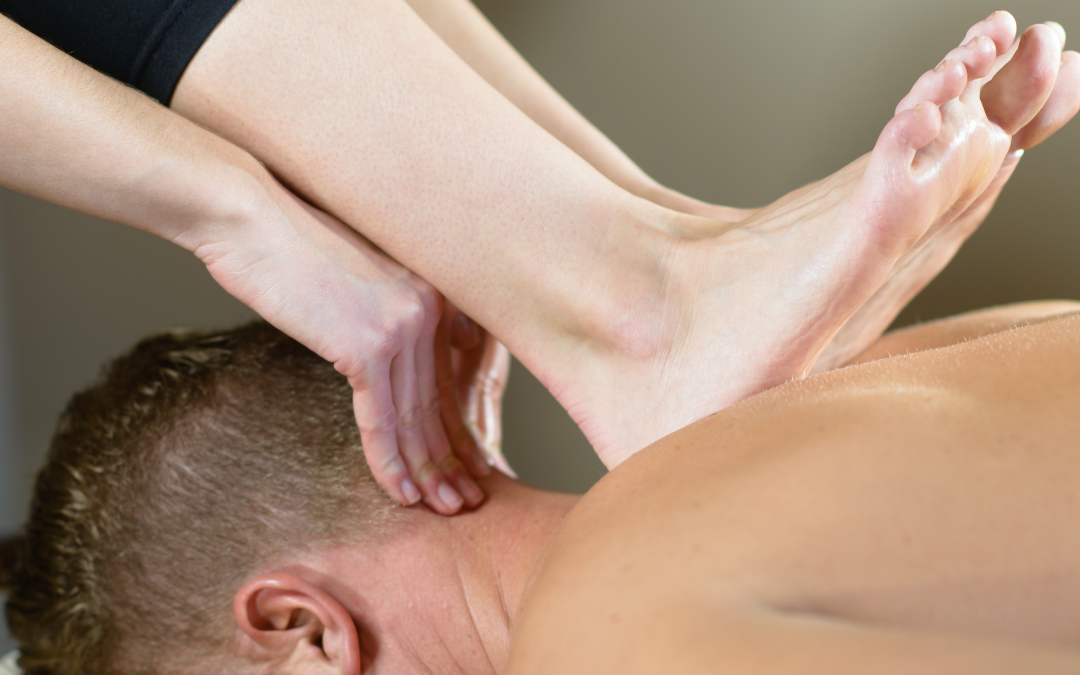Anna-Mieke is a RMT and Ashiatsu Practitioner at Full Circle Health Network, who is answering questions about Ashiatsu Massage Therapy.
What does Ashiatsu mean?
Ashiatsu is a Japanese word meaning foot pressure.
Ashi (foot) atsu (pressure).
Where did Ashiatsu originate?
Although coined as a Japanese word, using one’s feet to massage started in India as early as the 12th century. Chavutti Thirumal is the Malayalam (an Indian language) word for foot pressure. Ropes were hung from the ceiling to help stabilize the person giving massage, with the receiver lying on a mat on the floor. Barefoot massage practice evolved through Asia and the Pacific Islands. Only in the past 20 years has this style gained popularity in the Western World.
Do people enjoy Ashiatsu massages?
Absolutely. I’ve started massaging clients with my feet after having treated them for over a year with my hands. Many people say they will never go back to hands as it’s a broader, more forceful pressure.
Can you do specific pressure, given your foot is bigger than your hand?
I can apply a lot of force through my first metatarsals (big toes)! Heel pressure can also be a very direct technique as the pressure from my heel can focus more locally. I often also use my hands during an Ashiatsu treatment, for example when I am doing a face massage and specific neck treatment on a client.
What are the benefits of Ashiatsu?
The answer is two-fold: There are benefits for both practitioner and client.
Practitioner Benefits:
Humans are bipedal for a reason. Unlike our hands, our feet are designed to transfer our weight through tiny ligaments, joints and muscles when walking and standing. Gravity is a huge help, as instead of pushing from my shoulders through my hands, my weight naturally falls through my feet.
The ergonomics of Ashiatsu lend to using more global muscles (core, thigh stabilizers) during massage, rather than repeatedly straining my hands and forearms. Using my feet more than my hands will help reduce my chance of developing chronic injuries as an Registered Massage Therapist. Also, it’s extremely fun.
Client Benefits:
My foot is at least twice the size of my hand; therefore, I cover a lot more surface area in a single stroke. Since my weight is distributed over a larger area, there is less pressure per square inch (PSI) which feels broad and comforting for the client. Although a foreign idea to some, being massaged by feet is very relaxing. Elbows, thumbs and fingers are actually rather pokey!
Are you hanging up there? Is it safe?
Ashiastu requires great balance and precision, along with slow and controlled movement. With two secure 8-foot bars, Ashiatsu is made to be very safe. I’d say 25% of the time I use my feet while seated at the head of the table (upper back, shoulders, neck), and the rest of the time is spent standing on the table or stool.
Is this covered by my insurance?
Absolutely. Ashiatsu Massage is considered a technique in Registered Massage Therapy, and is thereby covered (provided you have insurance).
Did you teach this to yourself? Where did you learn this?
In August 2019 I became certified to practice Ashiatsu through the CIAMT (Canadian Institute of Ashiatsu Massage Therapy).


Recent Comments